Orders Is Orders (12 page)

But it was John W. Campbell Jr.’s
Astounding Science Fiction
that finally proved the most memorable LRH vehicle. While every fan of L. Ron Hubbard’s
galactic epics undoubtedly knows the story, it nonetheless bears repeating: By late
1938, the pulp publishing magnate of Street & Smith was determined to revamp
Astounding Science Fiction
for broader readership. In particular, senior editorial director F. Orlin Tremaine
called for stories with a stronger
human element.
When acting editor John W. Campbell balked, preferring his spaceship-driven tales,
Tremaine enlisted Hubbard. Hubbard, in turn, replied with the genre’s first truly
character-driven
works, wherein heroes are pitted not against bug-eyed monsters but the mystery and
majesty of deep space itself—and thus was launched the Golden Age of Science Fiction.
The names alone are enough to quicken the pulse of any science fiction aficionado,
including LRH friend and protégé, Robert Heinlein, Isaac Asimov, A. E. van Vogt and
Ray Bradbury. Moreover, when coupled with LRH stories of fantasy, we further come
to what’s rightly been described as the foundation of every modern tale of horror:
L. Ron Hubbard’s immortal
Fear.
It was rightly proclaimed by Stephen King as one of the very few works to genuinely
warrant that overworked term “classic”—as in:
“This is a classic tale of creeping, surreal menace and horror. . . . This is one
of the really, really good ones.”

L. Ron Hubbard, 1948, among fellow science fiction luminaries at the World Science
Fiction Convention in Toronto.
To accommodate the greater body of L. Ron Hubbard fantasies, Street & Smith inaugurated
Unknown
—a classic pulp if there ever was one, and wherein readers were soon thrilling to
the likes of
Typewriter in the Sky
and
Slaves of Sleep
of which Frederik Pohl would declare:
“There are bits and pieces from Ron’s work that became part of the language in ways
that very few other writers managed.”
And, indeed, at J. W. Campbell Jr.’s insistence, Ron was regularly drawing on themes
from the Arabian Nights and so introducing readers to a world of genies, jinn, Aladdin
and Sinbad—all of which, of course, continue to float through cultural mythology to
this day.
At least as influential in terms of post-apocalypse stories was L. Ron Hubbard’s 1940
Final Blackout.
Generally acclaimed as the finest anti-war novel of the decade and among the ten best
works of the genre ever authored—here, too, was a tale that would live on in ways
few other writers imagined. Hence, the later Robert Heinlein verdict: “Final Blackout
is as perfect a piece of science fiction as has ever been written.”
Like many another who both lived and wrote American pulp adventure, the war proved
a tragic end to Ron’s sojourn in the pulps. He served with distinction in four theaters
and was highly decorated for commanding corvettes in the North Pacific. He was also
grievously wounded in combat, lost many a close friend and colleague and thus resolved
to say farewell to pulp fiction and devote himself to what it had supported these
many years—namely, his serious research.
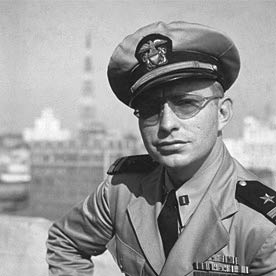
Portland, Oregon, 1943; L. Ron Hubbard, captain of the US Navy subchaser PC 815.
But in no way was the LRH literary saga at an end, for as he wrote some thirty years
later, in 1980:
“Recently there came a period when I had little to do. This was novel in a life so
crammed with busy years, and I decided to amuse myself by writing a novel that was
pure
science fiction.”
That work was
Battlefield Earth: A Saga of the Year 3000.
It was an immediate
New York Times
bestseller and, in fact, the first international science fiction blockbuster in decades.
It was not, however, L. Ron Hubbard’s magnum opus, as that distinction is generally
reserved for his next and final work: The 1.2 million word
Mission Earth.
How he managed those 1.2 million words in just over twelve months is yet another piece
of the L. Ron Hubbard legend. But the fact remains, he did indeed author a ten-volume
dekalogy
that lives in publishing history for the fact that each and every volume of the series
was also a
New York Times
bestseller.
Moreover, as subsequent generations discovered L. Ron Hubbard through republished
works and novelizations of his screenplays, the mere fact of his name on a cover signaled
an international bestseller. . . . Until, to date, sales of his works exceed hundreds
of millions, and he otherwise remains among the most enduring and widely read authors
in literary history. Although as a final word on the tales of L. Ron Hubbard, perhaps
it’s enough to simply reiterate what editors told readers in the glory days of American
Pulp Fiction:
He writes the way he does, brothers, because he’s been there, seen it and done it!
For more information about the life and works of L. Ron Hubbard,
go to
www.lronhubbard.org
.
The Stories from the
Golden Age
Your ticket to adventure starts here with the Stories from the Golden Age collection
by master storyteller L. Ron Hubbard. These gripping tales are set in a kaleidoscope
of exotic locales and brim with fascinating characters, including some of the most
vile villains, dangerous dames and brazen heroes you’ll ever get to meet.
The entire collection of over one hundred and fifty stories is being released in a
series of eighty books and audiobooks. For an up-to-date listing of available titles,
go to
www.goldenagestories.com
.

AIR ADVENTURE
Arctic Wings
The Battling Pilot
Boomerang Bomber
The Crate Killer
The Dive Bomber
Forbidden Gold
Hurtling Wings
The Lieutenant Takes the Sky
Man-Killers of the Air
On Blazing Wings
Red Death Over China
Sabotage in the Sky
Sky Birds Dare!
The Sky-Crasher
Trouble on His Wings
Wings Over Ethiopia

FAR-FLUNG ADVENTURE
The Adventure of “X”
All Frontiers Are Jealous
The Barbarians
The Black Sultan
Black Towers to Danger
The Bold Dare All
Buckley Plays a Hunch
The Cossack
Destiny’s Drum
Escape for Three
Fifty-Fifty O’Brien
The Headhunters
Hell’s Legionnaire
He Walked to War
Hostage to Death
Hurricane
The Iron Duke
Machine Gun 21,000
Medals for Mahoney
Price of a Hat
Red Sand
The Sky Devil
The Small Boss of Nunaloha
The Squad That Never Came Back
Starch and Stripes
Tomb of the Ten Thousand Dead
Trick Soldier
While Bugles Blow!
Yukon Madness
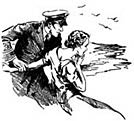
SEA ADVENTURE
Cargo of Coffins
The Drowned City
False Cargo
Grounded
Loot of the Shanung
Mister Tidwell, Gunner
The Phantom Patrol
Sea Fangs
Submarine
Twenty Fathoms Down
Under the Black Ensign

TALES FROM THE ORIENT
The Devil
—
With Wings
The Falcon Killer
Five Mex for a Million
Golden Hell
The Green God
Hurricane’s Roar
Inky Odds
Orders Is Orders
Pearl Pirate
The Red Dragon
Spy Killer
Tah
The Trail of the Red Diamonds
Wind-Gone-Mad
Yellow Loot
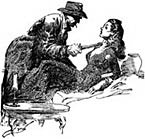
MYSTERY
The Blow Torch Murder
Brass Keys to Murder
Calling Squad Cars!
The Carnival of Death
The Chee-Chalker
Dead Men Kill
The Death Flyer
Flame City
The Grease Spot
Killer Ape
Killer’s Law
The Mad Dog Murder
Mouthpiece
Murder Afloat
The Slickers
They Killed Him Dead

FANTASY
Borrowed Glory
The Crossroads
Danger in the Dark
The Devil’s Rescue
He Didn’t Like Cats
If I Were You
The Last Drop
The Room
The Tramp
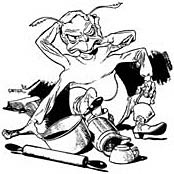
SCIENCE FICTION
The Automagic Horse
Battle of Wizards
Battling Bolto
The Beast
Beyond All Weapons
A Can of Vacuum
The Conroy Diary
The Dangerous Dimension
Final Enemy
The Great Secret
Greed
The Invaders
A Matter of Matter
The Obsolete Weapon
One Was Stubborn
The Planet Makers
The Professor Was a Thief
The Slaver
Space Can
Strain
Tough Old Man
240,000 Miles Straight Up
When Shadows Fall
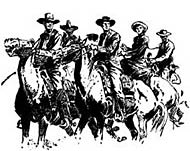
WESTERN
The Baron of Coyote River
Blood on His Spurs
Boss of the Lazy B
Branded Outlaw
Cattle King for a Day
Come and Get It
Death Waits at Sundown
Devil’s Manhunt
The Ghost Town Gun-Ghost
Gun Boss of Tumbleweed
Gunman!
Gunman’s Tally
The Gunner from Gehenna
Hoss Tamer
Johnny, the Town Tamer
King of the Gunmen
The Magic Quirt
Man for Breakfast
The No-Gun Gunhawk
The No-Gun Man
The Ranch That No One Would Buy
Reign of the Gila Monster
Ride ’Em, Cowboy
Ruin at Rio Piedras
Shadows from Boot Hill
Silent Pards
Six-Gun Caballero
Stacked Bullets
Stranger in Town
Tinhorn’s Daughter
The Toughest Ranger
Under the Diehard Brand
Vengeance Is Mine!
When Gilhooly Was in Flower